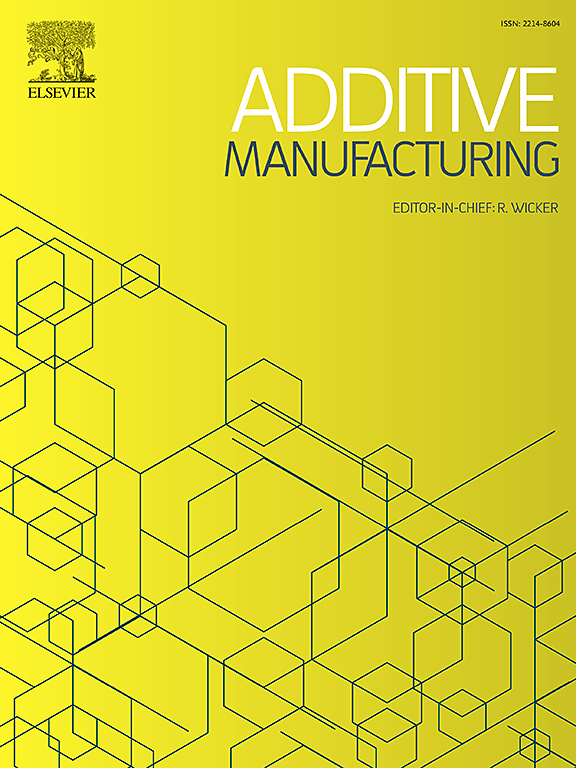Microstructure tailoring for crack mitigation in CM247LC manufactured by powder bed fusion – Laser beam
IF 10.3
1区 工程技术
Q1 ENGINEERING, MANUFACTURING
引用次数: 0
Abstract
Tailored microstructures in powder bed fusion – laser beam (PBF-LB) can aid in crack mitigation of non-weldable Ni-base superalloys such as CM247LC. This study explores the effect of a range of stripe widths from 5 mm down to 0.2 mm to control solidification cracking, microstructure, and residual stress in CM247LC manufactured by PBF-LB. The decrease in melt pool depth with the reduction in stripe width from 5 to 0.2 mm promoted the < 100 > crystallographic texture along the build direction. The crack density measurements indicated that there is an increase from 0.62 mm/mm2 (5 mm) to 1.71 mm/mm2 (1 mm) followed by a decrease to 0.33 mm/mm2 (0.2 mm). Atom probe tomography investigations at high-angle grain boundaries revealed that there is higher Hf segregation in 0.2 mm stripe width when compared to 5 mm. This indicates that the cracking behavior is likely influenced by the grain boundary segregation which in turn is dependent on melt pool shape/size and mushy zone length indicated by accompanying simulations. Residual stress, measured by X-ray diffraction, decreased from 842 MPa (5 mm) to 690 MPa (1 mm), followed by an abnormal rise to 842 MPa (0.7 mm) and 875 MPa (0.5 mm). This residual stress behavior is likely associated with the cracks acting as a stress relief mechanism. However, the 0.2 mm stripe width exhibited the lowest stress of 647 MPa, suggesting a different mechanism for stress relief, possibly due to re-melting. These findings highlight the critical role of stripe width as a scan strategy in PBF-LB processing of crack-susceptible alloys.
求助全文
约1分钟内获得全文
求助全文
来源期刊

Additive manufacturing
Materials Science-General Materials Science
CiteScore
19.80
自引率
12.70%
发文量
648
审稿时长
35 days
期刊介绍:
Additive Manufacturing stands as a peer-reviewed journal dedicated to delivering high-quality research papers and reviews in the field of additive manufacturing, serving both academia and industry leaders. The journal's objective is to recognize the innovative essence of additive manufacturing and its diverse applications, providing a comprehensive overview of current developments and future prospects.
The transformative potential of additive manufacturing technologies in product design and manufacturing is poised to disrupt traditional approaches. In response to this paradigm shift, a distinctive and comprehensive publication outlet was essential. Additive Manufacturing fulfills this need, offering a platform for engineers, materials scientists, and practitioners across academia and various industries to document and share innovations in these evolving technologies.
 求助内容:
求助内容: 应助结果提醒方式:
应助结果提醒方式:


